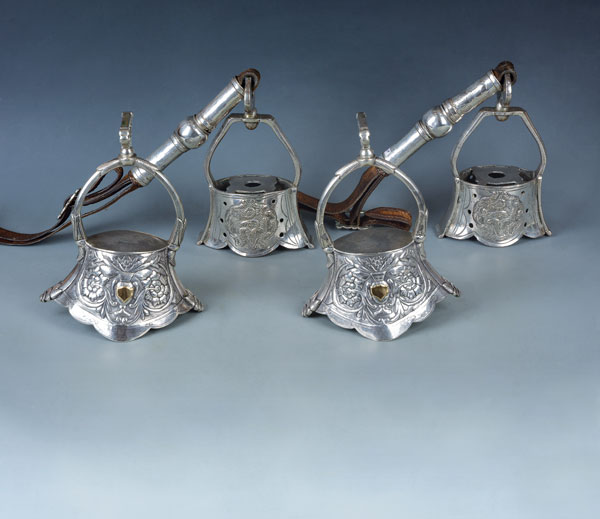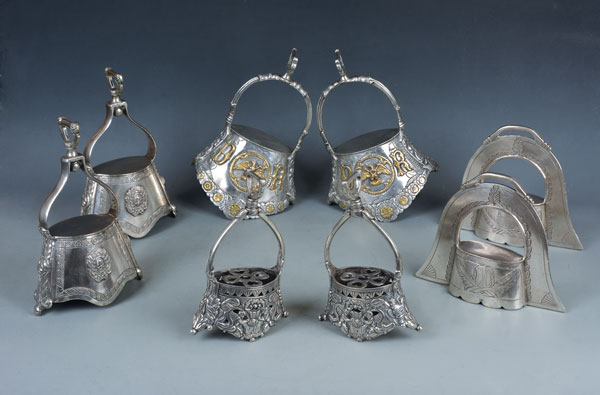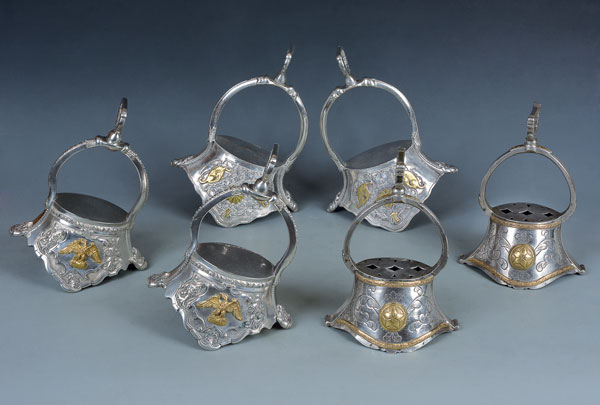Horsey Set
Writer Leslie Gilbert ElmanSouth American equestrian silver was made to be noticed.
The homes of wealthy landowners in 18th- and 19th-century colonial South America were not fancy. Instead, people showed off their wealth publicly. Just as luxury automobiles are status symbols today, on the Pampas of Argentina centuries ago, the extent to which your horse was “dressed” was a sign of your own prosperity and status.
Parading on horseback outfitted with elaborate tack made of heavy hand-wrought silver was certain to make people stop and look. To some extent, that hasn’t changed.
At the opening of the TEFAF New York art and antiques fair in October, collectors filled the stand of Eguiguren Arte de Hispanoamérica to admire and buy the South American equestrian silver that is the Buenos Aires-based dealer’s specialty. Such beautiful, substantial, one-of-a-kind pieces still make people stop and look.
South America’s abundance of precious metal deposits has been a mixed blessing—a source of wealth and pride, yet a driving force behind the Spanish conquest and subsequent oppression of the local population. In the 1530s, the conquistadors’ attraction to bright, shiny things was already in full swing thanks to tales of El Dorado, the mythical city of gold they expected to find in South America. It hit a fever pitch in 1545 when the Cerro Rico de Potosí silver deposits were discovered high in the Andes mountains of Bolivia.
Silver was nearly as desirable as gold, and Potosí had more silver than anyone could have imagined. Holy Roman Emperor Charles V, also known as Charles I of Spain, declared Potosí an imperial city. Its population grew to more than 160,000, about the size of Madrid. It became the 16th century’s largest industrial complex, home to the world’s largest silver mine and the site of the Spanish Royal Mint—all at an elevation above 13,000 feet. (Now a UNESCO World Heritage Site, Potosí still has a working mine.)
In a prosperous, favored city such as Potosí, it wasn’t uncommon to see aristocrats and military men alike on parade, riding on horses adorned with jewels, precious metals and even feathers. A report from 1602, for example, describes a general whose horse wore a cover of mother-of-pearl brocade, a golden medallion around its neck and pearls braided through its mane.
Not every rider made such an extravagant display, but the fashion of outfitting one’s horse with finery persisted for centuries throughout South America.
In 1776, the Viceroyalty of the Río de la Plata (River of Silver) was founded. It encompassed parts of Uruguay, Paraguay and Bolivia and most of Argentina (whose name comes from argent, the Latin word for silver). That’s when silver became the metal of choice for equestrian adornment among the gauchos (horsemen) of Argentina’s Pampas (plains). Stirrups, spurs, headstalls, bridles and reins all were fashioned from it. Saddles and whips were trimmed with it. An onlooker was bound to be impressed by the sight.
In an article from 1888, a Methodist missionary recounted his time in Argentina. Although he had plenty of criticism for the gauchos, even he couldn’t help marveling at their accoutrements. “I have seen saddles worth a thousand dollars with solid silver stirrups, pommels, and ornaments weighing as much as a man. A pair of silver spurs are worth anywhere from $50 to $100, according to size and workmanship, and stirrups of solid silver in the form of a heelless slipper the belles of Argentine consider essential to a riding costume,” he noted. (Adjusted for today’s dollars, that saddle would have cost slightly less than $25,000!)
Today, such objects appeal to keen horse riders as well as to collectors of silver and “objects of vertu”—one-of-a-kind practical objects made from precious materials. The stirrups, in particular, are exquisite examples of craftsmanship. From the monogrammed, gold-embossed men’s versions to the delicate slipper-shaped women’s styles, their shapes and decoration are so varied that each is a work of art in its own right that will make you stop and look—just as they were intended to do.
Leslie Gilbert Elman is the author of Weird But True: 200 Astounding, Outrageous and Totally Off the Wall Facts. She writes about antiques and other subjects for Design NJ.



